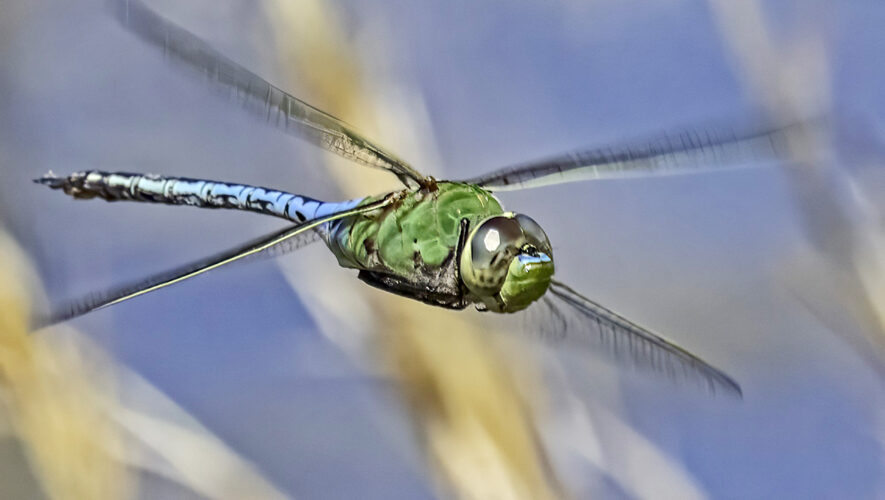Where have all the bag trees gone?
Next time you’re on a walk through the neighborhood, look up. You probably won’t see flimsy bags with looped handles fluttering against the blue of the midsummer sky the way you used to.
Gov. Murphy’s 2020 law banning stores from giving shoppers free plastic bags – the kind that, improperly discarded, cling to any branch within range – was controversial. And it still has doubters and naysayers, as a few news outlets made clear earlier this year when they published a study paid for by the American Recyclable Plastic Bag Alliance, a group that’s been known to lobby against plastic bag bans, claiming the ban backfired.
But if you were bugged by seeing bags in trees before the ban, you’ve probably noticed you’re not bugged as often as you used to be. The incredible reduction of these unsightly, unnatural plastic bags flapping in our treetops is an example of what we already know from other attempts to mitigate threats to the environment: human intervention can make a difference.
We could use more such interventions in New Jersey. One in particular – our limited law against neonicotinoids, a class of insecticides – stands out lately.
Last year, New York Gov. Kathy Hochul signed the Birds and the Bees Protection Act, the first law in the country to prohibit the use of corn, soybean, and wheat seeds treated with neonicotinoids for agricultural production. More recently, evidence of why that prohibition matters surfaced.
In June, the journal PLOS ONE published a study about the decline of butterfly species in the Midwest. The results show that agricultural insecticides, neonicotinoids especially, had the biggest effect on the size and diversity of butterfly populations during the study period, 1998 to 2014. The disastrous impact of neonicotinoids on butterflies outpaced even climate change and habitat loss.
Neonicotinoids are among the most environmentally harmful yet most commonly used pesticides since DDT, the National Caucus of Environmental Legislators wrote in its January announcement of the New York law. They get absorbed into the tissues of plants and contaminate soil for years. They also leech into waterways, and drive pollinator and invertebrate decline.
In 2018, most of Europe banned neonicotinoids because of concern over the risk to bees. The new study on butterflies comes at a time when wildlife officials in the U.S. are deciding whether to add monarch butterflies to the endangered species list.
It’s a consequential decision for a lot of reasons, not just because people love the free-floating beauty of the colorful creatures. The path of destruction the insecticides are tearing could cause a devastating and monumental ripple effect: Before butterflies mature, when they’re still caterpillars, they’re a critical food source for other animals, particularly birds. Research has linked some bird declines to reduced insect populations.
The National Caucus of Environmental Legislators writes that, in New York, neonicotinoid use is expected to decrease 80 to 90 percent through the combined prohibition of residential use and agricultural use. In this state we’re in, a law signed by Gov. Murphy in 2022 prohibits non-agricultural use only. It’s a start, said Dan Raichel, director of pollinators and pesticides, nature, at the National Resources Defense Council.
“But now that the larger New York State market is acting, and doing the heavy lifting on how to implement, other states are thinking about following suit, and there’s strength in numbers,” Raichel said. For example, Vermont just passed a similar prohibition on neonic seed treatments, explicitly tying implementation of its law to the New York state law. Vermont’s law might have special relevance for New Jersey, Raichel said, because like New Jersey it has a number of restrictions on specialty crops, e.g., fruits and veggies, meant to protect bees.
As trees studded with flapping bags grow scarcer here, and as the incidence of bags washing into storm sewers that lead to streams and eventually bays and oceans wanes, we in New Jersey have demonstrated we know how to be environmental problem solvers. In its 2022 beach cleanups, Clean Ocean Action found that the number of plastic shopping bags, straws, and foam takeout containers had dropped by more than 35 percent compared to the previous year. In 2023, that reduction continued. The cleaner beaches, the group said, can be attributed to the state’s ban. It’s just one way New Jersey is helping to protect nature.
Our neighbors in New York are setting a different kind of example with their neonicotinoid ban. Their efforts could mean the difference between a future devoid of butterflies and hundreds of other species of pollinating insects, including bees and moths, as opposed to a landscape filled with these necessary creatures.
These are just a couple of examples that clearly demonstrate that human intervention works! We can correct and reverse many harms, both intentional and accidental. We just have to follow the science and have the courage to act.
To learn more about Gov. Hochul’s Birds and Bees Protection Act, go to https://www.governor.ny.gov/news/governor-hochul-signs-birds-and-bees-act-nation-leading-legislation-protect-new-yorkers-and
And for information about preserving New Jersey’s land and natural resources, visit the New Jersey Conservation Foundation website at www.njconservation.org or contact me at info@njconservation.org.
Jay Watson is co-executive director of the New Jersey Conservation Foundation.




